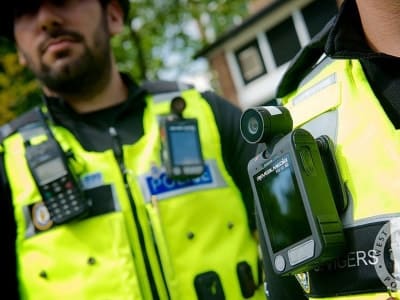As we look forward to 2018 and the hot button issues affecting our nations police, the implications of the responsible use of Body Worn Video (BWV) continues to rise to the surface. Body Worn Video has both helped curtail use of force and improve police / community relations. But it also presents risks for police who may be faced with the decision to use force when it may actually be needed. But overall the technology has led to a decrease in police related complaints and violent engagements. We thought it might be helpful to provide a brief background into the use of this technology as it’s sure to crop up in stories throughout the year.

Body Worn Video (BWV) technology encompasses the array of audio, photo, and video recording devices worn by law enforcement personnel. The cameras are used to record any event where law enforcement is involved and is one of the key methods used to help foster transparency and trust between police officers and their communities in the United States and abroad.
BWV was first deployed in the United Kingdom a little over a decade ago. In 2005, the Devon and Cornwall Police Departments are widely considered the first departments to implement and test the technology.
By 2006 the program scaled to a national level to support the domestic violence enforcement campaign (DVEC). In cases where the victim was hesitant to press charges or provide a statement, the evidence from recordings was often enough to support prosecutions. Results from the DVEC proved that Body worn cameras offered “the ability to significantly improve the quality of the evidence provided by police officers at incidents” (Home Office October 2006 – “Lessons Learned from the Domestic Violence Enforcement Campaigns 2006”).
The technology quickly spread to other programs across the country. By 2010, over 40 UK police areas had implemented body cameras in their departments. In addition to providing better evidence, the Paisley and Aberdeen BWV project in 2011 proved that the program also worked to increase public reassurance, significantly reduce and resolve complaints against cops, and reduce assaults on officers. The affiliated reduction in paperwork resulted in more time on average for officers to remain on patrol.
Bring Body Worn Video Technology to the United States
In 2012 The United states initiated similar BWV tests in Rialto, Mesa and Pheonix. These studies showed similar results to those conducted in the UK almost 8 years prior. Rialto, in particular, saw an 88% reduction in complaints against Law enforcement Officers.
However, The costs to purchase necessary equipment proved to be a barrier for many departments to adopting the technology. In 2014, as a response to the rising need for BWV and the financial burden placed on departments nationwide, President Barack Obama “proposed that the federal government reimburse localities half the cost of implementing body-worn camera programs.” Over the course of 3 years, 75 million was to be authorized by congress to purchase 50k devices.
On September 21, 2015, Attorney General Loretta Lynch announced that the United States Department of Justice had disbursed $23.2 million in grants to expand the program and further research.
Today, BWV programs are deployed in departments across the country with a number of key objectives, one of which is to foster transparency and trust between police officers and their communities. With tensions rising between law enforcement and the public, BWV technology helps hold accountable all parties involved in a conflict or dispute, and helps encourage honest accounts and dispel false accusations made by any parties in the court of law.
Learn more about APOA







